INDUSTRIAL
by Kevin "Magikal" Reay
When I decided to do a deep dive into the depths of the original Community Chest there were three things that I was dreading. The first was the sheer magnitude of single level releases from authors like Alex Parsons and Gene Bird. Second and opposite, I knew that Kaiser's back catalogue would involve most of the megaWADs of the DSV series. Last but by far not the least was Kevin "Magikal" Reay's levels. His entries have been the most consistently derided element of CCHEST but it's not hard to see why having finally played this level. Every author has their own design language and Kev's is somewhere in the realm of mid-'90s cryptographers like Jim Flynn and Bob Evans. His 2002 solo debut was Industrial, a very large and long MAP01 replacement. It was originally tested in Legacy but will probably work in any Boom-compatible port that has complex Z-collision, e.g. Eternity or (G)ZDoom. This is almost entirely due to a couple of instances toward the level's end, most notably a torch that you will have to ledge-crawl over. The author's only real caveat is for you to not jump.
INDUSTRL is essentially a series of escape rooms. You begin in a small alleyway, for lack of a better term, and then try with all of your cognitive might (and copious wallhumping) to move forward. If the opening area throws you for a loop then you can safely sit this one out. You will be employing the same techniques to make progress in every new situation. Oftentimes this comes at a price with monster closets springing open to unleash unsavory creatures like revenants and chaingunners in prime ambush position. An early surprise just about caused me to quit since it sends you down a long cattle chute to flip a fairly obvious switch. A walkover line just in front of the button opens up a revenant monster closet, though, and there's no avoiding that missile when it starts heading your way.
The opening area has a slightly more traditional progression because the barriers blocking your way to the wooden torturous path are gone for good once they've been removed. The warehouse is similarly easy to navigate after you reach it. The stacks are a red herring, though, and Reay isn't entirely obvious about where you have to go next. I believe that the destination of the teleporter chain is supposed to be a nudge in the right direction. From here you are locked into Industrial's core gameplay loop. When you enter a new room the door will typically slam shut behind you and it's up to you to figure out how to move forward and, failing that, how to open the way back to where you came from. This almost always involves triggering a monster closet or twenty and dealing with a sudden, unwelcome influx.
This holds true for the rest of the PWAD. Your three major signposts are the key-activated elements. Red is first and also the dead end that sends you onto the initial big chain of escape rooms. You see yellow next but it's actually the last to be played with. Blue is the only one to be found anywhere close to where you have to use it but its surrounding setups are some of Kevin's most devious. The enormous, open southwestern area is notable for its emphasis on player exposure where the lock-ins are mostly about twisting you into uncomfortable positions. The runway to the south end reveals progressively higher-tier walls of enemies, but the first two - shotgun guys and chaingunners - are objectively the worst to handle. If you didn't find the secret BFG in the heart of the spiral then you'll wish that you had. The storage silos are a bit more dastardly because the top tier walls only block movement. This comes as an unwelcome fact when monsters start teleporting in or, God forbid, the twenty-one cubbies on the north side open up.
The puzzle language of Doom is pretty simple and driven by linedef actions. This generally involves hitting switches, though you sometimes need to walk over what are basically invisible tripwires. Authors typically use clues to hint at functions for observant players. Some are more obvious than others and involve identifying incongruities like misaligned textures. They can run the gamut, though, including conspicuously-placed health bonuses. Reay's design language is heavily based on switch play and tripwires with a healthy dose of monster closets sprinkled in. A contemporary review from Colin Phipps suggests that Kevin made use of a quirk in Doom's lighting model where north-south walls have a different brightness than east-west. I dunno whether this is true but it might explain why I had to wallhump to find a few of the doors. You'll definitely suffer if you refuse to open and scrutinize the automap.
Some of the hints are more obvious than others. A wall shot up with bullet holes sticks out like a sore thumb. A blank segment in a row of cages, not too bad. Secreting passages off of a room in rotationally symmetric positions? A little obscure. One of the more common "what the fuck?" gimmicks involves hiding a switch on the back of a pop open / close monster closet door. Check every backside! Well, maybe not the very last one. The one thing that threw me the hardest was at the very end, mostly because Magikal decided to pull the paper-thin ledge trick at the 11th hour. I even considered it a possibility before dismissing it because I hadn't seen it in the other 98% of the map. More fool me. I dunno whether the shootable torch in the bridge / mancubi room has a specific tell but its mere existence (alongside its useless brethren) was enough for me. It's not like you have much else to interact with during the lock-in phase.
The layout is incredibly dense which makes navigating all of the timed triggers a bugbear. I felt pretty good when I managed to make it to the next chamber, though. Perhaps the biggest moment of catharsis besides hitting the exit switch comes from taking the elevator up to the top of the wooden fences in the level's starting area. You'll have had your eye on them since the beginning because they are bedecked with rockets, shells, or other bonuses, so it's a major milestone. Especially once you realize that you can leap across to the tops of the boxes in the warehouse. Those moments when I finally spotted the method to Magikal's madness were supremely rewarding.
Kevin unfortunately passed away in mid 2003, a month before the release of the Community Chest for which he created "Goin' Down" and "Citadel At the Edge of Eternity". We don't often get a glimpse of the personal lives behind authors but after his death some of his closer forums friends revealed that he was an accomplished magician in the UK. He wasn't widely known at the time he was alive, but in the following years his skill with cards has become the stuff of legends. The mystique is partially because there are so few publicly available recordings of his performances but mainly - looking at the reactions of his peers - due to his extraordinary ability.
I feel as though there is some aspect of this encoded in the way in which his sector machinery is designed - or, rather, the duel between the author who crafted it and the player who must decipher it. During an old video of Kevin performing on a show, the host - fellow craftsman Paul Daniels - praises Reay's skill. Specifically, he says "I'm a magician, and I wish that I could tell you exactly how this was done because you have no idea how difficult and how beautiful this is, really." Blundering through puzzle levels isn't anything on the level of figuring out a magician's technique, of course. Magikal's setups have a bit of legerdemain about them, though, and if you can't follow the movement of his complex timed-triggers then you will fail to be led through them. Especially if you allow yourself to be flim-flammed by distracting monster closets which may throw you off the path of success.
Industrial would never win an award for its aesthetic style. Just as Kevin did amazing things with an ordinary deck of cards, this level is mostly about how the parts of each individual scenario move. The starting area's spaces are highly orthogonal and consist of big, square rooms which are connected by a plethora of narrow passageways. You see a few oddities like midtexture bridges but the more eye-pleasing stuff happens with the abstract switch-up when you're literally elevated above the beginning level geometry. If it weren't for the fact that every walkover trigger unleashes yet another death trap then the second "half" would have a strong Jim Flynn vibe. Particularly considering the enormous silver silos in the outdoor yard.
I got pretty salty at the revenant / switch cattle chute ambush but I'm glad that I persevered through this exercise. It wasn't Reay's favorite work at the time of his passing but INDUSTRL is a formidable Rubik's cube of sectors and triggers. It's more than enough to flex the mental mapping skills of folks who enjoy the raw puzzle-style of the '95 era. R.I.P. Kevin; I wish that I could tell you how excellent it was to have you in this world.

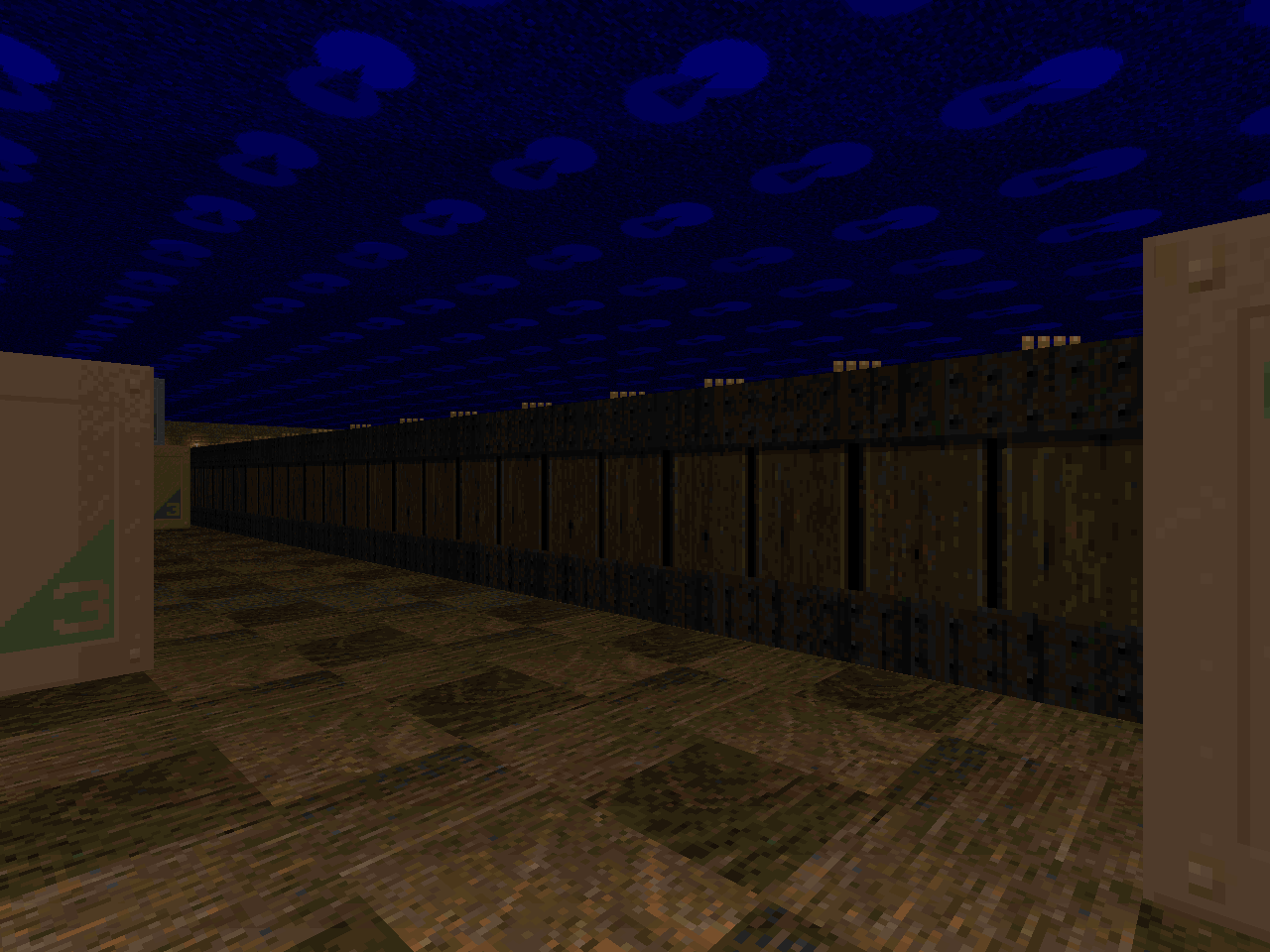
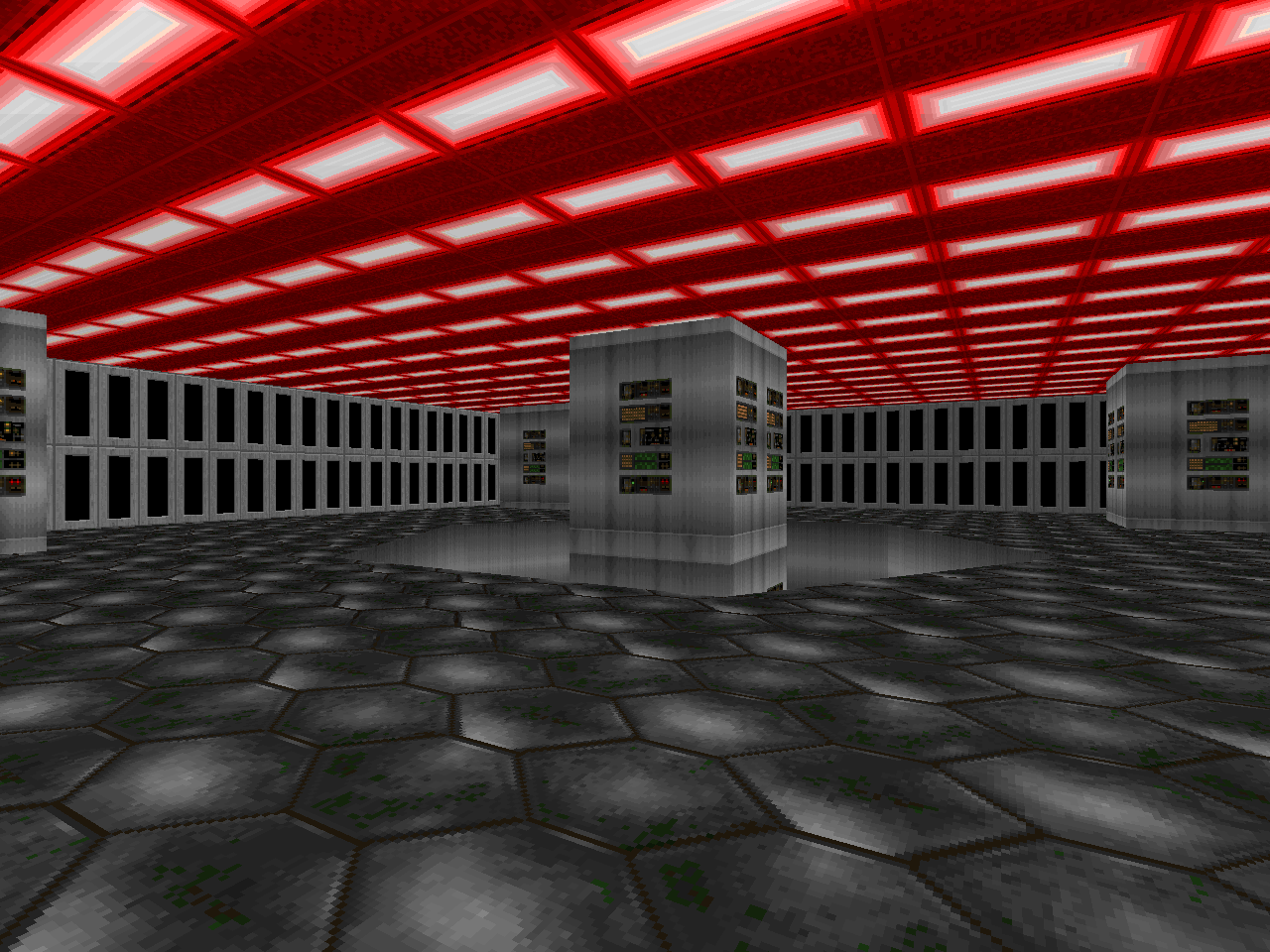

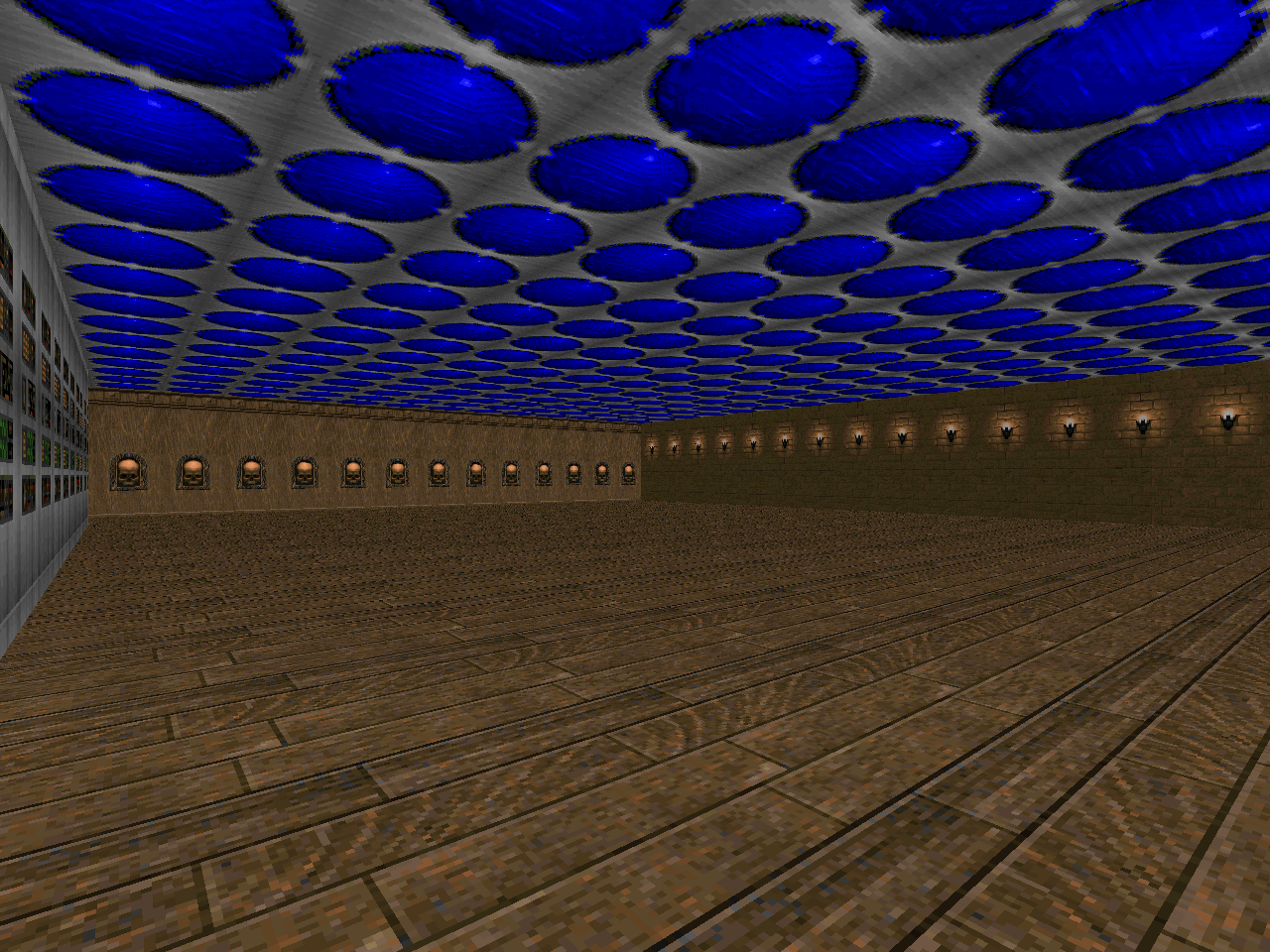
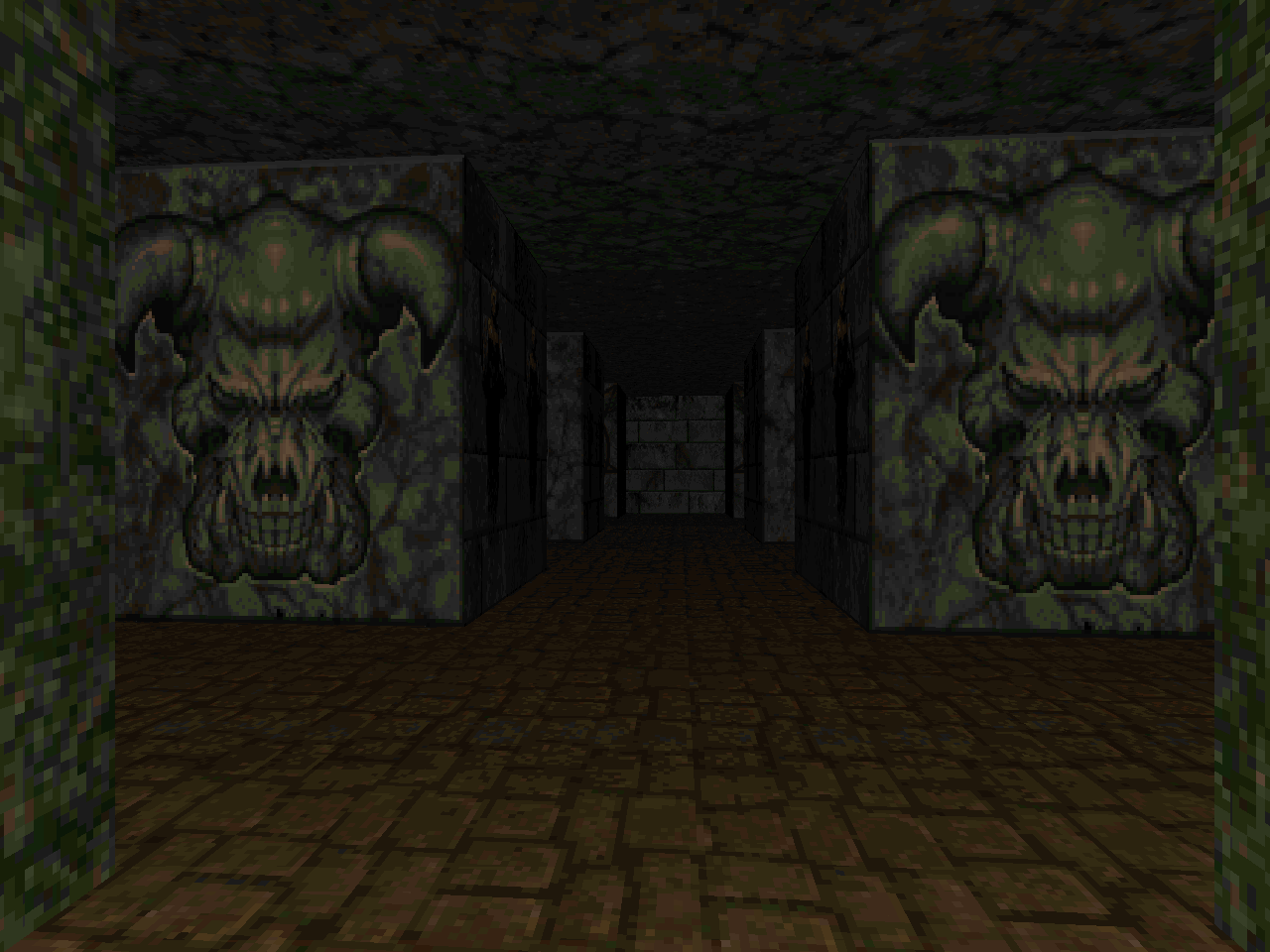
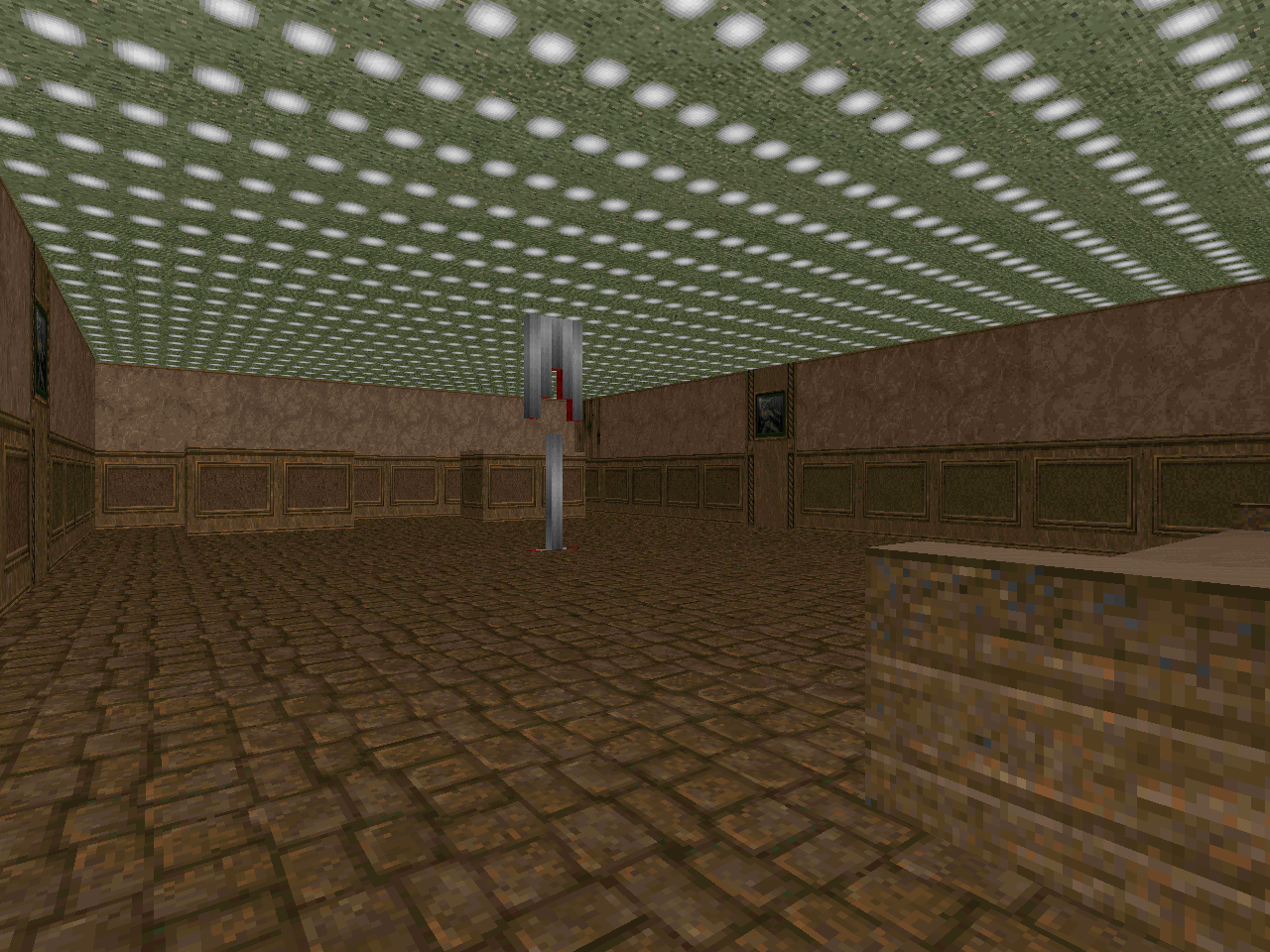
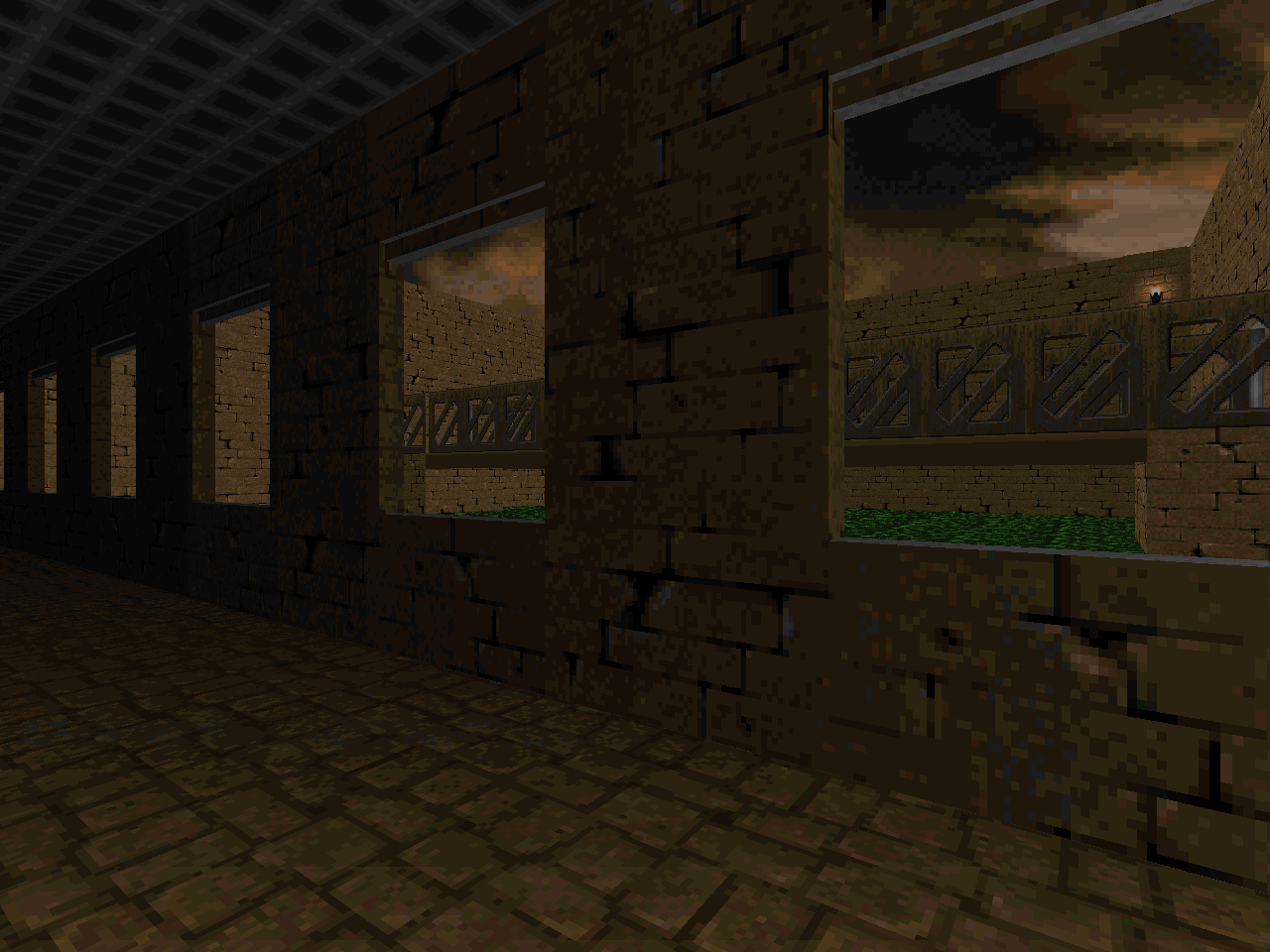
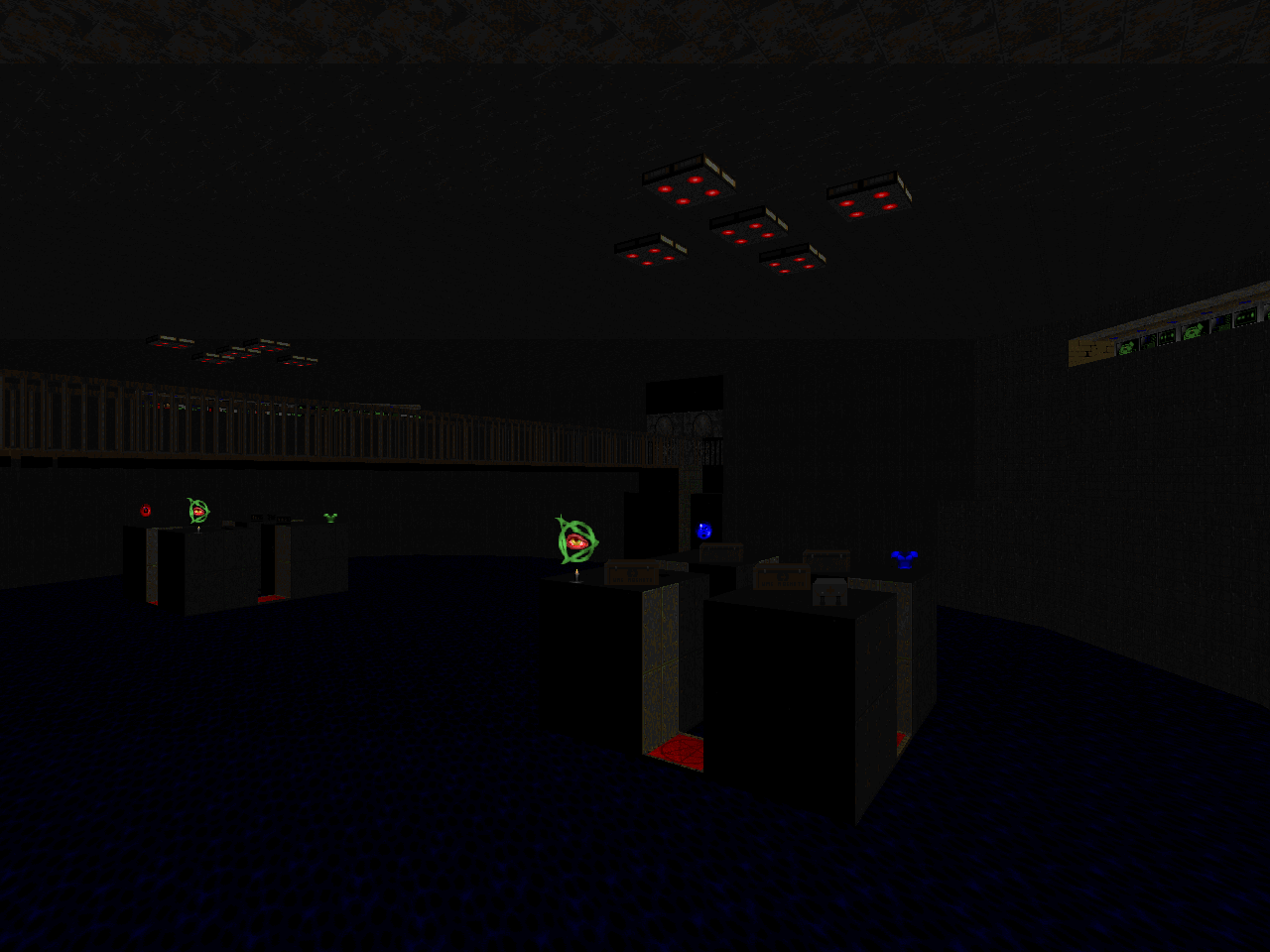
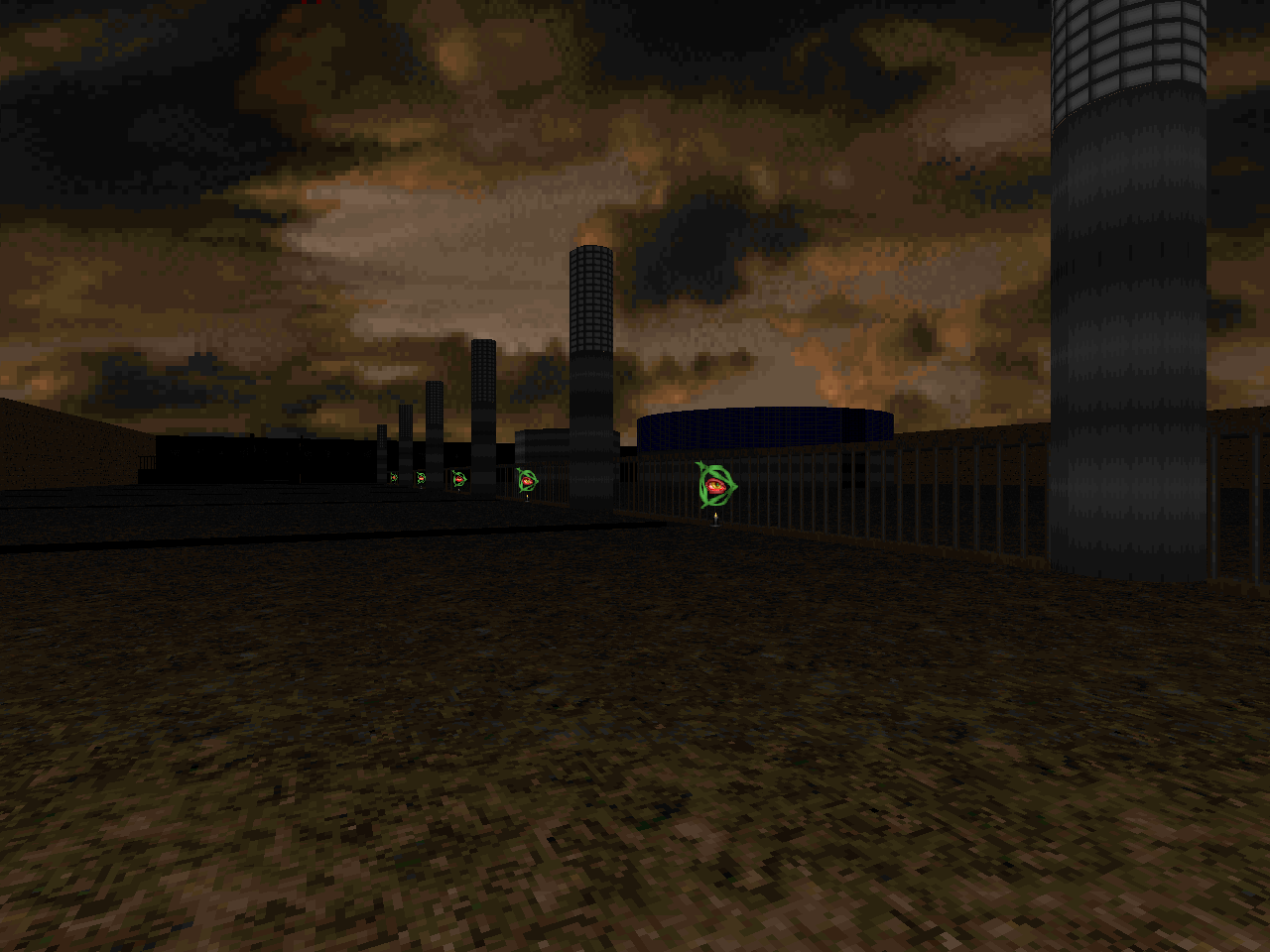

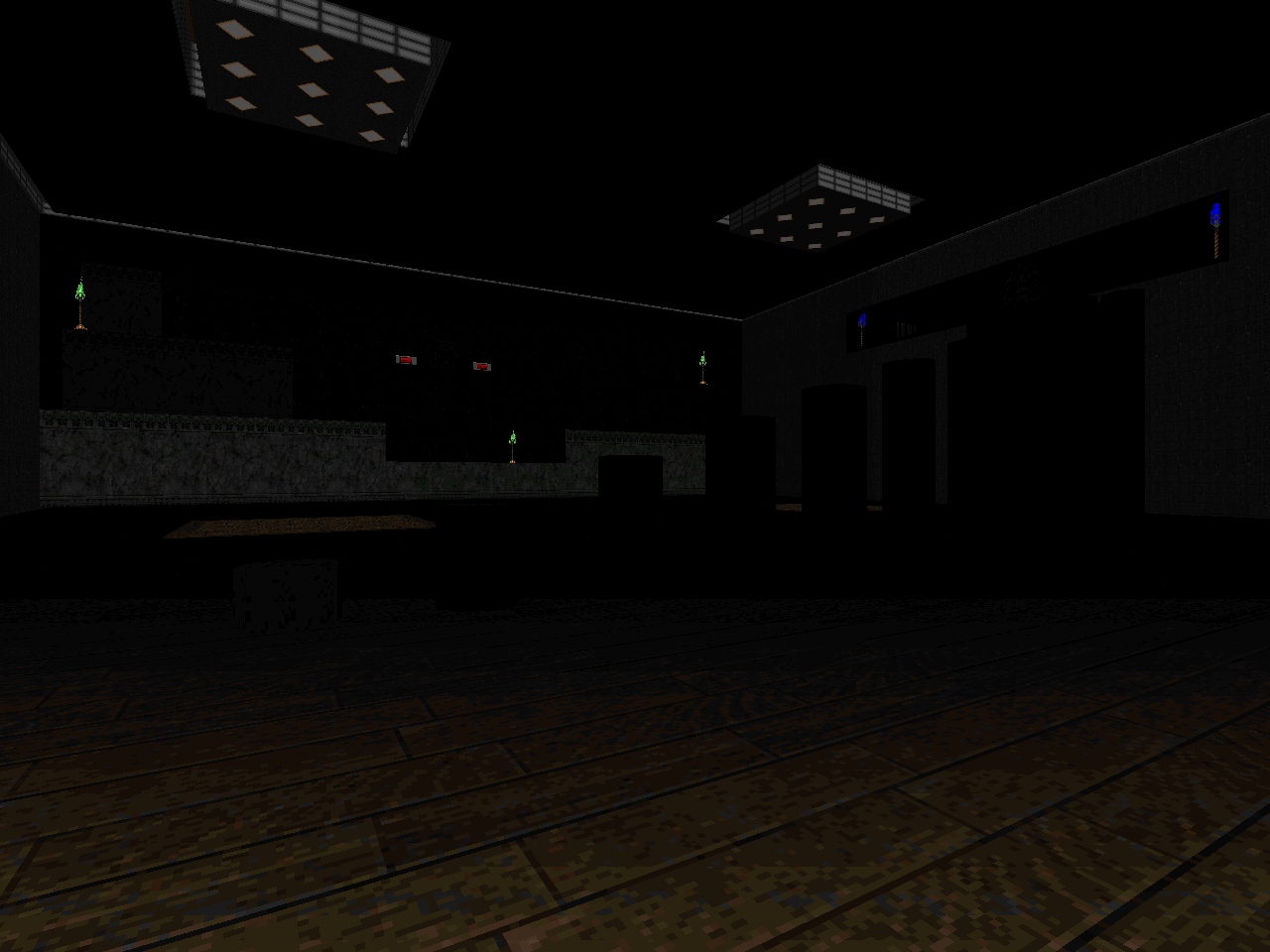
No comments:
Post a Comment